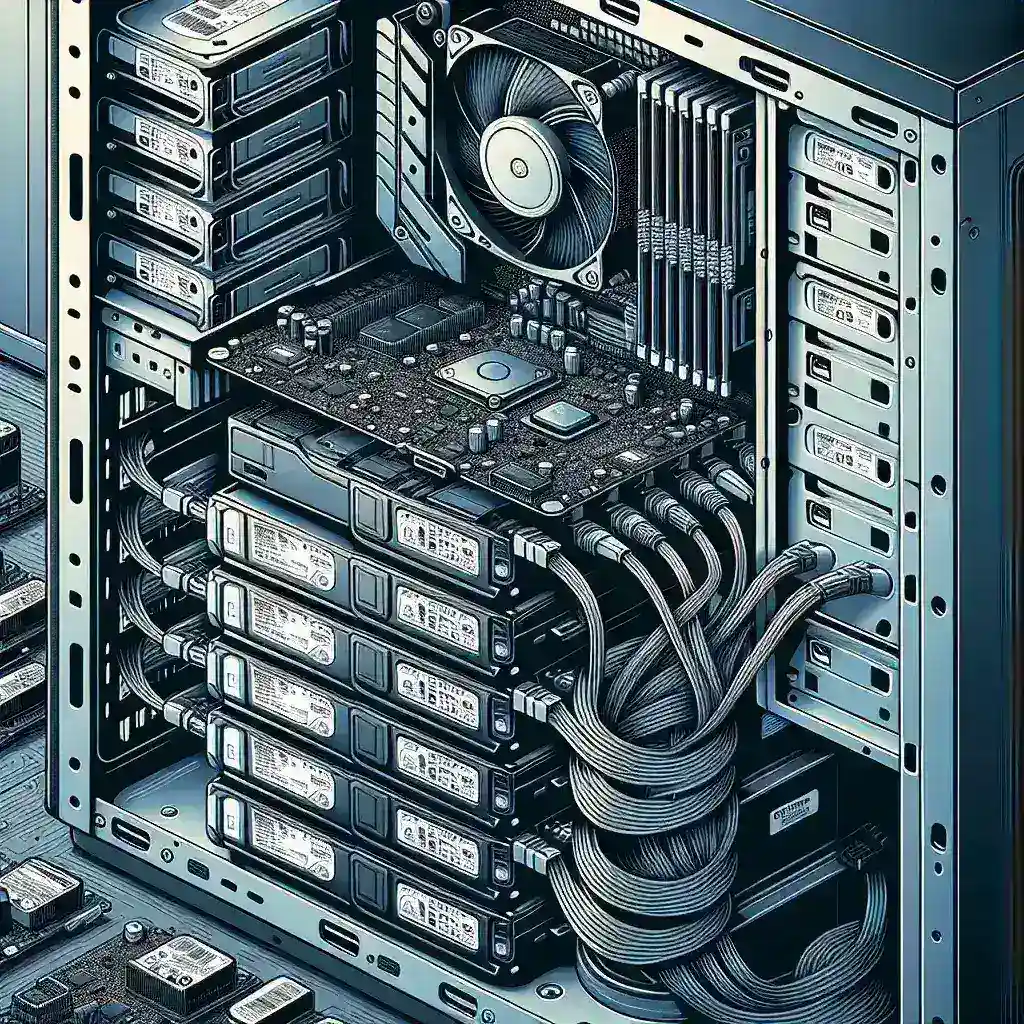For many power users, gamers, and professionals, storage space is a critical factor in a PC setup. Whether you’re dealing with large files, an extensive game library, or simply want more room to breathe, having more than two hard drives in your PC can be tremendously beneficial. Although it might seem daunting, upgrading your system for additional storage is both achievable and efficient. Here’s a detailed guide on how you can do it.
Understanding Your Storage Needs
Before delving into the actual setup, it’s essential to understand your requirements. You’ll need to decide on the types of drives you’ll use: HDDs, SSDs, or a combination. HDDs (Hard Disk Drives) are generally more economical per gigabyte, making them ideal for bulk storage. SSDs (Solid State Drives) offer faster read and write speeds, which are perfect for the operating system and applications.
Table Comparing HDD and SSD
| Feature | HDD | SSD |
|---|---|---|
| Cost/Gigabyte | Low | High |
| Speed | Moderate | High |
| Durability | Moderate | High |
| Storage Capacity | High | Moderate |
Checking Compatibility
1. Motherboard Ports
The first step is to check if your motherboard has enough SATA ports. Most modern motherboards come with at least four SATA ports. However, some high-end models feature more. You can usually find this information in your motherboard’s manual or on the manufacturer’s website.
2. Power Supply
The next consideration is whether your power supply can handle additional drives. Extra hard drives will require additional SATA power connectors. If your current PSU doesn’t have enough, you may need to consider a more powerful one or use splitters.
3. Physical Space
Ensure that your PC case has the needed drive bays. Many cases come with multiple 3.5-inch and 2.5-inch bays that can house additional HDDs and SSDs. Some newer models even offer modular drive bays that can be adjusted or removed to make room for more storage or better airflow.
Installing the Drives
Step-by-Step Guide
- Turn off and unplug your computer. Safety first! Make sure to disconnect all power sources before opening your case.
- Open your PC case. Remove the screws or use the quick-release mechanisms to open the side panel of your PC case.
- Mount the drives. Insert the drives into available drive bays. Secure them with screws if necessary.
- Connect SATA cables. Attach one end of the SATA cable to the motherboard port and the other end to the hard drive.
- Connect power cables. Connect the SATA power cables from the power supply unit to each hard drive.
- Close the case. Once everything is connected, close the side panel and secure it.
- Boot up your PC. Reconnect your PC to the power source and turn it on.
After installation, you might need to initialize and partition the new drives through the Disk Management tool in Windows.
Using RAID Configuration
If you’re looking to dive deeper into managing multiple drives, consider using RAID (Redundant Array of Independent Disks). RAID allows you to combine multiple drives for improved redundancy, performance, or both. Here are some common RAID levels:
- RAID 0: Stripes data across two or more drives for improved performance. Note that there’s no fault tolerance – if one drive fails, all data is lost.
- RAID 1: Mirrors data across two drives. Provides redundancy as data is duplicated.
- RAID 5: Requires at least three drives. Data and parity information are striped across three or more drives, offering a balance between performance and redundancy.
Setting up RAID will typically require access to your system’s BIOS or a dedicated RAID controller card, which can add a layer of complexity but offers significant benefits for power users.
External Solutions
If adding drives internally isn’t feasible, consider external options:
External Hard Drives
These drives connect via USB, Thunderbolt, or eSATA and provide additional storage without the need to open your case.
NAS (Network Attached Storage)
NAS devices are specialized appliances that provide storage over a network. Suitable for users who need massive amounts of storage accessible by multiple devices.
While setting up more than two hard drives in a PC might seem complicated, breaking it down into manageable steps and understanding your specific needs can make the process smooth and advantageous. Whether you’re opting for an internal upgrade or exploring external storage solutions, expanding your storage can significantly enhance your computing experience.
